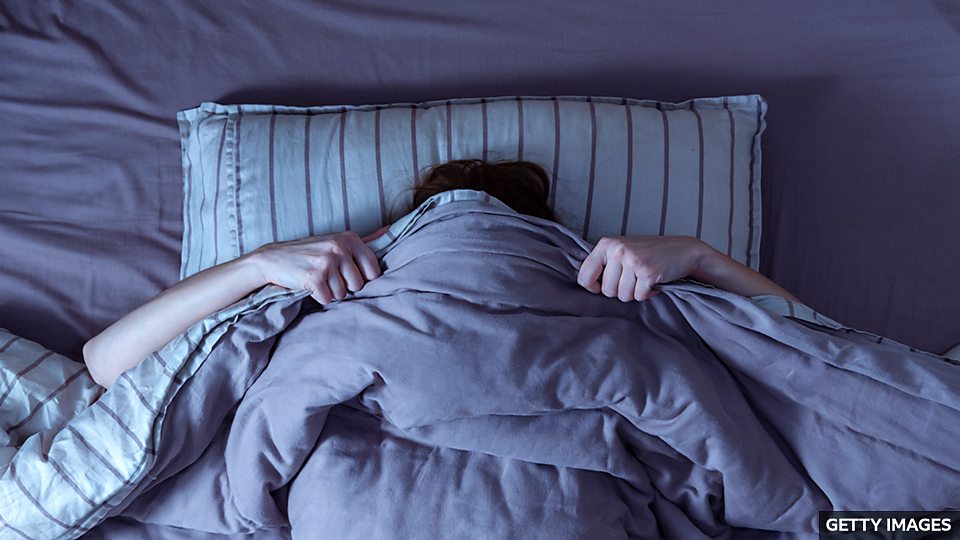如果你昨晚做了一个不愉快的梦,这可能起到积极的作用。因为研究表明,睡眠中感到害怕有助于在清醒时控制恐惧。
Our dreams – why we have them and what's in them – has long been a subject of fascination. Now, a new study, published in the journal Human Brain Mapping, demonstrates that dreams help us react better to frightening situations in our waking lives.
长久以来,我们的梦——为什么做梦以及梦里有什么一直是一个令人着迷的话题。现在,一项发表在《人脑图谱》期刊上的新研究表明,梦能帮我们在清醒状态下更好地应对可怕的情况。
Scientists from Geneva placed electrodes on 18 subjects whom they woke several times during the night. The researchers wanted to track brain activity during dreams, especially fearful ones. They found that regions of the brain react to fear in the same way while asleep and when awake.
来自日内瓦的科学家们在18名受试者身上放置了电极,并在夜间多次叫醒他们。研究人员想跟踪并记录他们在梦中,特别是在做可怕的梦时的脑部活动。他们发现,大脑的部分区域在睡眠中和清醒时应对恐惧的方式相同。
The researchers next gave a dream diary to 89 participants for a week. At the end of the week, they were placed in a magnetic resonance imaging machine or MRI and shown emotionally negative images, such as assaults or distressful situations, as well as neutral images. Dr Lampros Perogamvros said he was surprised by the outcomes.
接下来,研究人员将一本梦境日记发给了89名实验参与者,让他们进行为期一周的记录。在这周结束时,他们让参与者躺在磁共振成像机内,向他们展示了一些消极情绪的图像,比如袭击或痛苦的场面,以及无明显情绪倾向的图像。兰普洛斯·佩洛甘姆洛斯博士对该研究结果表示惊讶。
These results reinforce a neuroscientific theory about dreams, that we simulate frightening situations while dreaming in order to better react to them once we're awake. Dr Perogamvros is also interested in nightmares, but he cautions they might not have the same beneficial role as fearful dreams. He says, unlike bad dreams, in which the level of fear is moderate, nightmares are characterised by an excessive level of fear that disrupts sleep and has a negative impact on the individual once awake.
这些结果进一步证实了一个关于梦的神经科学理论:我们在做梦时会模拟令人害怕的场景,以确保醒来后能更好地应对这类情况。佩洛甘姆洛斯博士对噩梦也很感兴趣,但他提醒人们,噩梦可能起不到与可怕的梦境相同的积极作用。他说,与恐惧度适中的可怕梦境不同的是,噩梦的特点是恐惧度过高,这种恐惧会扰乱睡眠并对清醒状态下的人产生负面影响。
词汇表
fascination 着迷,入迷
react 应对、作出反应
waking 醒着的,清醒的
electrodes 电极
woke 叫醒了
brain activity 大脑活动
fearful 可怕的
asleep 睡着的
awake 醒着的
assaults 袭击,攻击
distressful 痛苦的
neutral 中性的
neuroscientific 神经科学的
simulate 模拟,模仿
nightmares 噩梦
moderate 适度的,适中的
disrupts 扰乱,打扰
2. 阅读理解:请在读完上文后,回答下列问题。
1. True or false? The researchers especially wanted to track brain activity during dreams that made people feel frightened.
2. What does the new study mentioned in the text demonstrate?
3. Where did the researchers place the participants a week after they had given them a dream diary?
4. According to Dr Lampros Perogamvros, do nightmares also help us control our fear in reality?
3. 答案
1. True or false? The researchers especially wanted to track brain activity during dreams that made people feel frightened.
True. The researchers wanted to track brain activity during dreams, especially fearful ones.
2. What does the new study mentioned in the text demonstrate?
The new study, published in the journal Human Brain Mapping, demonstrates that dreams help us react better to frightening situations in our waking lives.
3. Where did the researchers place the participants a week after they had given them a dream diary?
They placed the participants in a magnetic resonance imaging machine or MRI.
4. According to Dr Lampros Perogamvros, do nightmares also help us control our fear in reality?
No. He cautions they may not have the same beneficial role as fearful dreams. According to him, nightmares are characterised by an excessive level of fear that disrupts sleep and has a negative impact on the individual once awake.

